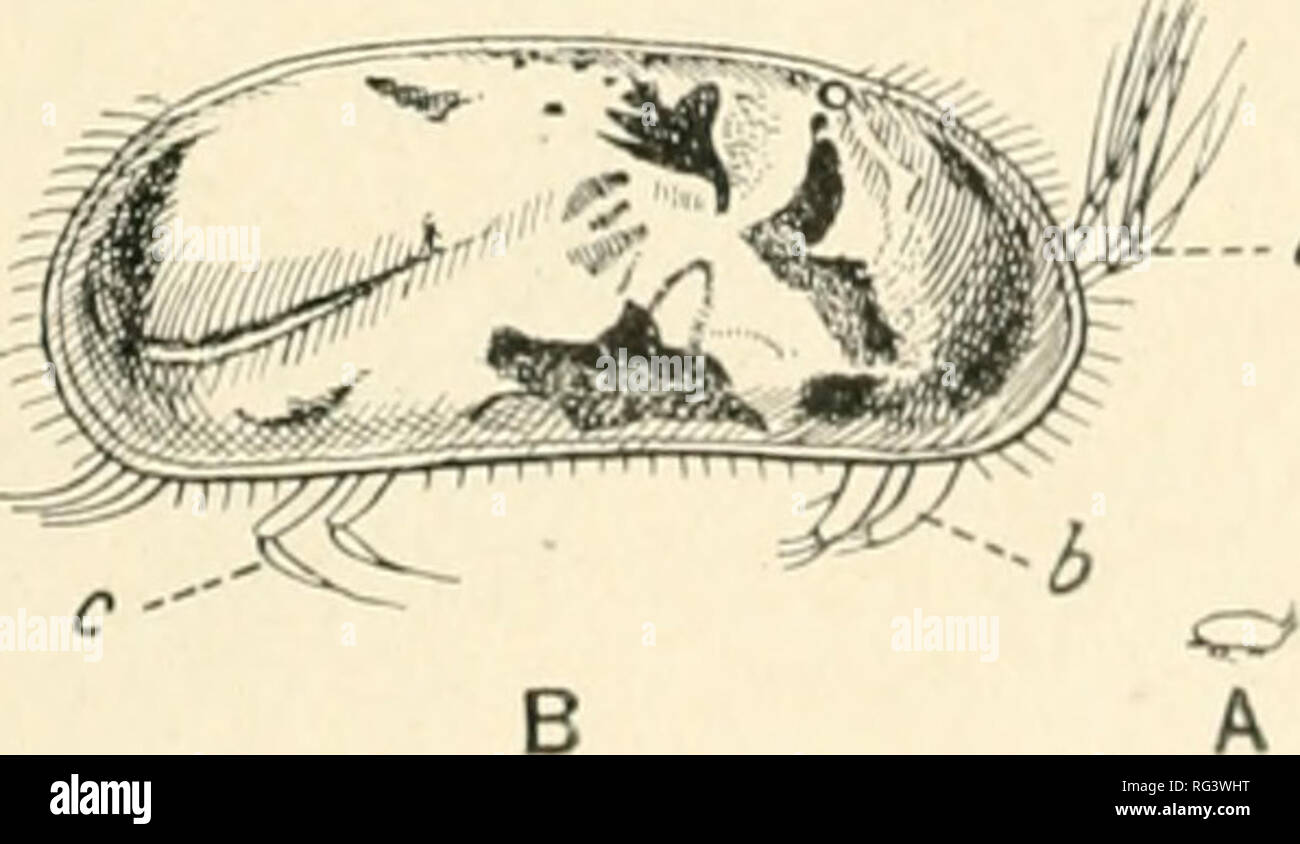. The Cambridge natural history. Zoology. OSTRACODA IO/ mantles of adult individuals and developing into the so-called compleniental males. Certain Cirripedes, viz. certain species of Scdlpcllum and Ibla and all the Acrothoracica, are dioecious. It is impossible to decide at present whether these species retain the primitive dioecious condition of the ancestral Cirripedes, or whether they too have been derived from an hermaphrodite state, but in the present state of knowledge they hardly affect the validity of the theory that has been proposed to account for the nature of the compleniental mal

Image details
Contributor:
Book Worm / Alamy Stock PhotoImage ID:
RG3WHTFile size:
7.2 MB (194.3 KB Compressed download)Releases:
Model - no | Property - noDo I need a release?Dimensions:
2075 x 1205 px | 35.1 x 20.4 cm | 13.8 x 8 inches | 150dpiMore information:
This image is a public domain image, which means either that copyright has expired in the image or the copyright holder has waived their copyright. Alamy charges you a fee for access to the high resolution copy of the image.
This image could have imperfections as it’s either historical or reportage.
. The Cambridge natural history. Zoology. OSTRACODA IO/ mantles of adult individuals and developing into the so-called compleniental males. Certain Cirripedes, viz. certain species of Scdlpcllum and Ibla and all the Acrothoracica, are dioecious. It is impossible to decide at present whether these species retain the primitive dioecious condition of the ancestral Cirripedes, or whether they too have been derived from an hermaphrodite state, but in the present state of knowledge they hardly affect the validity of the theory that has been proposed to account for the nature of the compleniental males and the hermaphrodite individuals. Order IV. Ostracoda. The Ostracoda are small Crustacea, the body consisting of very few—about eight—segments, and being completely enclosed in a carapace, which has the form of a bivalve shell. Develop- ment is direct, without a Nauplius stage. Tiie Ostracoda ^ are marine and fresh-water animals that can be divided into several families, differing slightly in habits and in struciuves correlated witli tliose habits. The Cypridae and Cytheridae include all the fresh-water and a vast majority of marine genera, adapted for a sluggish life among water-plants, thougli some can swim with consider- able activity. The common Cypris and Candona of our p(jnds and streams are familiar instances. The niove- luents of these animals are effected by means of thi; two pairs of uni- vamous pediforui antennae wliicb move togeth(!r and in a vertical straiglit line. Y^^._ 7-i.— Cuudona repions. A, hi the, ('yi.vidac, (Fig. 74) there are, Natural size; B x 15. «, 1st '' ^ . . iintfiniae ; h, 2na antennae : besides tlic mandibles, two ])airs of f, walking legs. (After Hainl.) maxillae, a ]»air of walking legs, and, lastly, a ]iaii- of a})]»'ndagcs, whieli are doul)led up into the carapace;, and are used for cleaning ])ur))Oses. In the marine Cytheridae there is only one maxilla, the last three api)endages ' Clans, r, i/rrsacJni., i</rii. -.ur Krf<irs